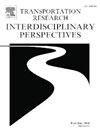用户会实践他们所宣扬的吗?探讨电动汽车使用意向行为差异的影响因素
IF 3.9
Q2 TRANSPORTATION
Transportation Research Interdisciplinary Perspectives
Pub Date : 2025-04-22
DOI:10.1016/j.trip.2025.101424
引用次数: 0
摘要
本研究探讨了电动汽车(EV)使用中的意向-行为差距,重点关注用户陈述的意向与实际购买行为之间经常被忽视的差异。我们首先在全面的电动汽车采用文献综述和计划行为理论的基础上,建立了一个理论框架并制定了研究假设。随后,利用加拿大2647名参与者的模拟购车博弈数据,采用结构方程模型方法对上述假设进行检验。然后,通过K-means聚类方法,根据不同的意向-模拟行为关系对电动汽车潜在用户进行分类,进一步探究存在和不存在意向-模拟行为差距的用户群体特征。研究结果表明,虽然购买意向对模拟行为有积极影响,但其预测能力有限,只能解释10.89%的模拟行为方差。性别、房屋类型和房屋所有权等关键因素显著调节了这种关系(p <;0.001)。从分析中可以得出四个细分市场,其中两个是“没有行动的绿色形象”用户和“低意向”电动汽车购买者,他们是意向-行为差距的主要贡献者。在间隙组(n = 1329),意向与模拟行为呈负相关(- 0.526标准化回归权值,p <;0.001)。虽然对排放的担忧激发了电动汽车的采用意愿(p <;0.001),实际购买行为受预算(p = 0.033)、车身风格偏好(p = 0.001)和家庭充电设施可用性(p <;0.001)。本研究最重要的贡献是电动车购买意愿与行为差距的测量与评估。研究结果表明,虽然计划行为理论中关于个体心理因素之间相互作用的假设是合理的,但要提高意图对行为的预测能力,还需要纳入更多的因素。未来的研究可能会在更广泛的区域背景和消费者群体中探索其他方面,以及纵向行为模式,以更好地了解电动汽车采用的变化动态。这项研究增加了关于有效的电动汽车采用技术的持续讨论,对寻求缩小意图-行为差距的政策制定者和营销人员具有实际意义。本文章由计算机程序翻译,如有差异,请以英文原文为准。
Will users practice what they preach? Exploring the influencing factors of the intention behaviour gap in electric vehicles adoption
This study explores the intention-behavior gap in electric vehicle (EV) adoption, focusing on the often overlooked discrepancy between users’ stated intentions and their actual purchasing behavior. We began by developing a theoretical framework and formulating research hypotheses based on a comprehensive EV adoption literature review and theory of planned behavior. Subsequently, data from a simulated vehicle purchase game involving 2647 participants in Canada were utilized to test these hypotheses by a structural equation model method. Then, potential EV users were categorized according to different intention-simulated behavior relationships through the K-means clustering method to further explore the characteristics of user groups with and without intention-simulated behavior gap. The findings indicate that while purchase intentions have a positive influence on simulated behavior, their predictive power is limited, explaining only 10.89 % of the variance in simulated behavior. Key factors such as gender, house type, and homeownership significantly moderate this relationship (p < 0.001). Four segments emerged from the analysis, with two—“green image with no action” users and “low intention” EV buyers—emerging as primary contributors to the intention-behavior gap. In the gap group (n = 1329), the relationship between intention and simulated behavior was negative (−0.526 standardized regression weight, p < 0.001). While concerns about emissions motivated EV adoption intentions (p < 0.001), actual purchasing behavior was more strongly influenced by budget (p = 0.033), body style preference (p = 0.001), and the availability of home charging facilities (p < 0.001). The most important contributions of this study are the measurement and evaluation of the EV purchase intention-behavior gap. The findings demonstrate that, while the assumptions in the theory of planned behavior about the interaction between individual psychological factors are sound, more elements must be incorporated to improve the predictive power of intentions on behaviour. Future studies might explore additional aspects across a wider range of regional contexts and consumer segments, as well as longitudinal behavior patterns, to gain a better understanding of the changing dynamics of EV adoption. This study adds to the continuing discussion about effective EV adoption techniques, with practical implications for policymakers and marketers seeking to close the intention-behavior gap.
求助全文
通过发布文献求助,成功后即可免费获取论文全文。
去求助
来源期刊

Transportation Research Interdisciplinary Perspectives
Engineering-Automotive Engineering
CiteScore
12.90
自引率
0.00%
发文量
185
审稿时长
22 weeks
 求助内容:
求助内容: 应助结果提醒方式:
应助结果提醒方式:


